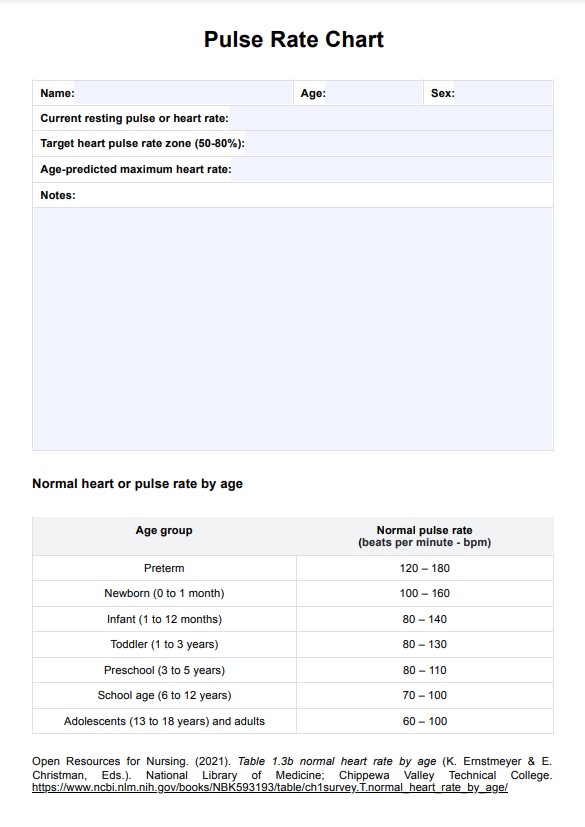A good pulse rate varies by age, with generally accepted ranges being 60-100 beats per minute for adults. For children and infants, the rate is typically higher, ranging from 70-100 beats per minute or more depending on their age. It's important to note that individual factors such as fitness level and overall health can also influence what is considered a good pulse rate.

Pulse Rate Chart
Using our Pulse Rate Chart, you can learn more about the heart's inner workings and how they may indicate overall health and well-being.
Pulse Rate Chart Template
Commonly asked questions
An unsafe pulse rate is generally considered to be below 40 beats per minute (bradycardia) or above 120 beats per minute (tachycardia) at rest. Such rates can indicate underlying health issues, and it is advisable to consult a healthcare professional if you experience consistently abnormal rates, especially if accompanied by symptoms like dizziness, shortness of breath, or chest pain.
For a 70-year-old, a normal resting pulse rate typically falls between 60 and 100 beats per minute. However, active older adults may have lower rates due to better cardiovascular fitness. It's important for seniors to consult their healthcare provider to determine what is normal for their specific health situation.
EHR and practice management software
Get started for free
*No credit card required
Free
$0/usd
Unlimited clients
Telehealth
1GB of storage
Client portal text
Automated billing and online payments











